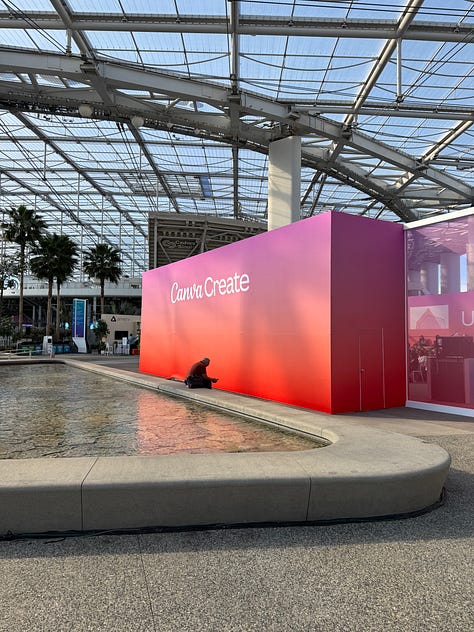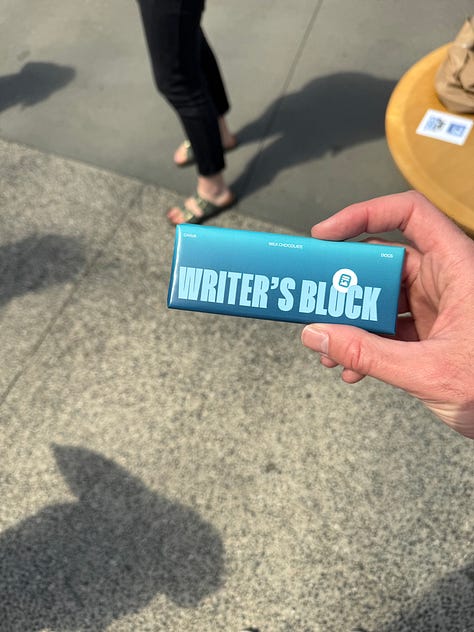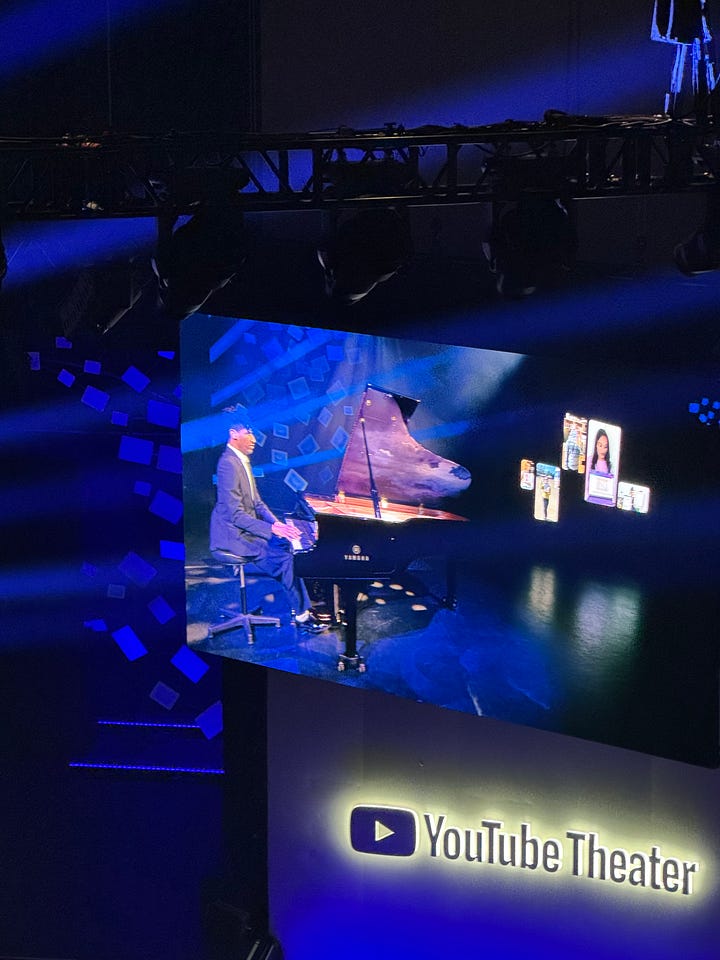The speed of success.
A recap of Canva Create, and what it means for the evolution of the creator economy.
How long does it take to become “great” at a new skill?
Malcolm Gladwell popularized the 10,000 hours benchmark in his book Outliers, but the real answer may be less daunting. I read a post this week by another New York Times best-selling author, Daniel Pink, which touched on the not-so-new science.
“In 1976, psychologist Anders Ericsson studied the habits of top performers. His question: How much practice does it take to outperform 95% of people at one skill?
The answer shocked even him. His finding? If you practice one skill for just 100 hours over a year — that’s 18 minutes a day — you’ll be better than 95% of people at it.”
Perhaps you’ve heard the related idea, most people overestimate what they can achieve in a day and underestimate what they can achieve in a year.
In a world that is truly, wholly overwhelming, where it feels impossible to be doing enough or learning fast enough to keep up, this should hopefully help you breathe a sigh of relief (I know it does for me). The truth is, speed and volume are far less critical than consistency. Just 18 minutes a day, and by this time next year you could be better than 95% of all people at the skill you’ve dreamed about.
Learning tools like Duolingo are built on this same premise, emphasizing “learning streaks” and bite-sized modules that make it easier to stay on track and harder to justify missing a day.
Finding creativity everywhere at Canva Create.
I found myself thinking about speed-to-habit and speed-to-success a couple of weeks ago as I sat in the audience in Hollywood Park, California for my third straight Canva Create event. This was the largest and most impressive event yet for the fast-growing platform that now boasts more than 230 million monthly active users. During the opening keynote, founders Melanie Perkins, Cliff Obrecht, and Cameron Adams unveiled several new updates that had the audience audibly reacting, including Canva Sheets, a Visual Suite 2.0, and the impressive Canva Code tool that can help non-technical users code anything from websites to interactive experiences and more, through the power of AI.
While the agenda was unsurprisingly compelling, featuring speakers like Cynthia Erivo, Jon Batiste, Guy Raz, Daniela Amodei and many more, the audience is always what makes this particular event so dynamic and inspiring to me. In this second straight year at SoFi Stadium in Los Angeles, the energy was as big as ever. I spent the day talking to people who empower design within all kinds of organizations, from religious institutions, to hospitals, to large enterprises, and to small local businesses.
Among many inspiring discussions throughout the day, one thing was clear:
Over the past five years, the speed to success for so many has accelerated dramatically. In a fractured economy, people are actively building incredible brands, communities, and skills.
I wrote recently for Rolling Stone Culture Council about how we turn to the creative class during periods of upheaval (ahem, global pandemic, etc.). But what may be lost in that message is that we all have the capacity to participate in the creative class, now more than ever before thanks to tools like the expanding Canva Visual Suite.
Consider someone like Grace Ling, a well-known creator in the design community who I ran into while walking around the event floor. Grace is the founder of Design Buddies, a community now with more than 150,000 design professionals working to support one another, upskill, and gain access to new industry jobs. Design Buddies was founded in April 2020 — coincidence? It took Grace and her team just five years to build one of the largest creative communities in the industry. And they did it their own way, without worrying about the traditional “right approach.” In fact, Grace invited us to a “bunny party” the next day to celebrate the anniversary of the community. Why? Because it was fun.
Truthfully, the speed-to-success rate is continuing to get even faster. Just watch the introduction of Canva Code, which included a focus group of non-technical users putting the tool to the test.
More often we are hearing of small teams (>10 employees) achieving previously unattainable revenue goals of $100MM or more, and it’s easy to imagine with tools like this these stories will become even more common.
Consistency matters most in the modern Renaissance.
With the advent of “vibe-coding,” or a programming style that relies heavily on AI and language prompts rather than manual coding processes, the landscape surrounding technological development is changing.
Much as tools like Canva, Picsart, Adobe Express and more democratized design, and made it more accessible to a wider swath of the population, the next phase of access will be focused on development.
So, consider a world where the barriers to building have been largely removed, and people from all disciplines have the ability to create content and experiences without heavy technical training. Each of us now has the ability to jump with confidence into our brightest ideas… kinda like this!
What becomes the differentiator?
Ironically, the skill that will separate the winners from the pack in our future creator economy will be the same skill that differentiated in prior paradigms: consistency.
Ideas have always been a dime a dozen (I hate to admit as someone who spends lots of time dreaming them up). Action matters more. And as former US President Harry S. Truman once said, “Imperfect action is better than perfect inaction.”
Today, building a minimally-viable product (MVP) for your idea is nearly as easy as coming up with the idea itself. But sticking to it, investing yourself into it, creating systems that make the product or content useful in an ongoing way — that will be the key. And that still undoubtedly relies on the power of human ingenuity.





I walked into Canva Create with plans to attend several sessions to take in lessons from the thought leaders assembled. But I spent the majority of the time out in the show floor, meeting with new and old friends and hearing about how excited they are to build: stories, brands, communities, products, etc.
We are in a remarkable period of upheaval, where traditional systems are fractured and the path forward is uncertain.
With just 18 minutes a day, in a year from now, you could be charting your own path. What will you do with it?


